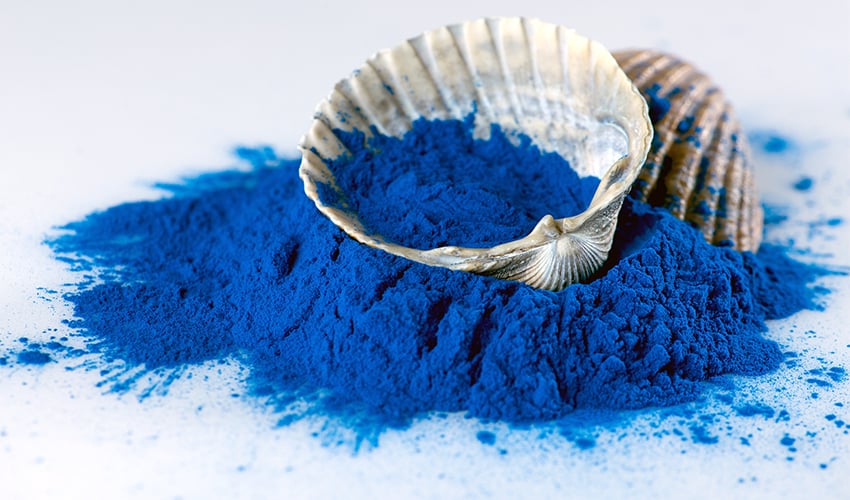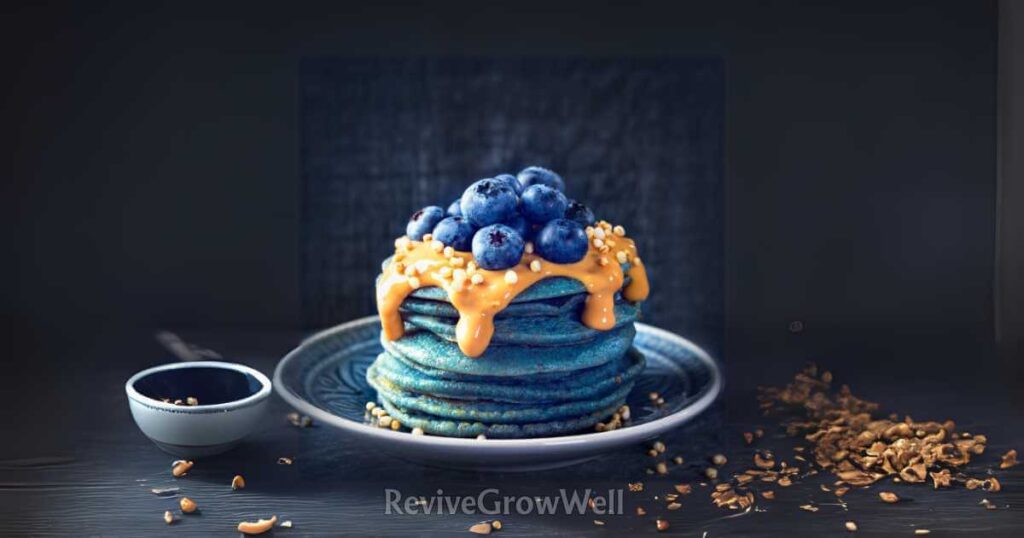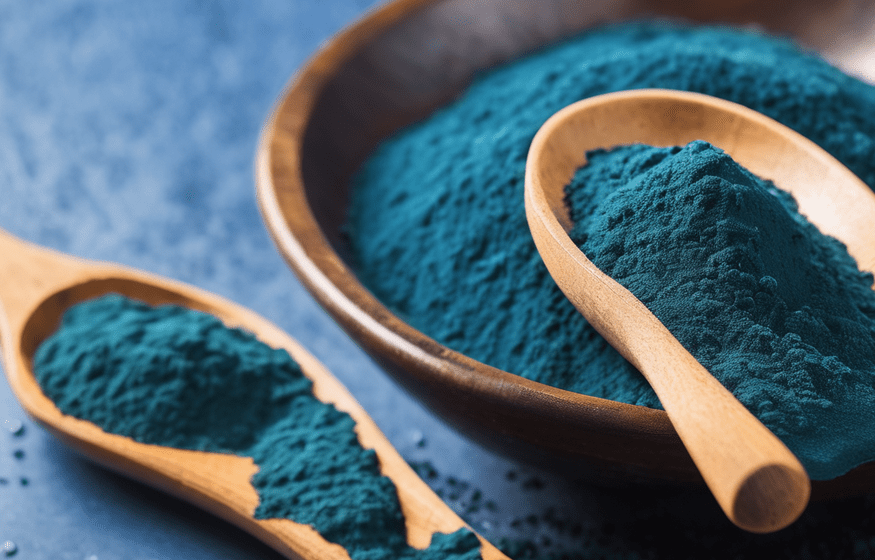Lately, people have been buzzing about natural alternatives to artificial food colorings and additives, and one gem stealing the spotlight is blue spirulina. But blue spirulina—what is it exactly? It’s a vibrant extract pulled from a type of blue-green algae, celebrated not just for its stunning hue but also for its impressive potential benefits.
What makes blue spirulina stand out is phycocyanin, a powerful antioxidant that gives it that signature electric blue color, setting it apart from other spirulina varieties. This pigment isn’t just for show—it’s linked to perks like reducing inflammation, boosting immune function, and even offering protection against certain chronic diseases. Pretty cool for a little algae, right?
Beyond health, blue spirulina is a dream for food lovers too. Imagine whipping up eye-popping smoothie bowls, colorful baked treats, or refreshing drinks that not only look amazing but also support your well-being. With its growing popularity in the culinary and wellness worlds, blue spirulina is proving to be more than a trend—it’s a creative, health-packed ingredient worth exploring. So, next time you spot that vivid blue, you’ll know exactly what it’s all about!
What Is Blue Spirulina?
Curious about blue spirulina—what is it, exactly? It’s a dazzling extract from Arthrospira platensis, a type of cyanobacteria often called blue-green algae, though it’s technically bacteria, not algae. Unlike its green cousin packed with chlorophyll, blue spirulina shines with phycocyanin, a pigment delivering its bold blue hue and a milder taste that’s winning fans everywhere.
This cyanobacteria thrives in freshwater lakes, ponds, and even saltwater, with a rich history of use. Centuries ago, communities in Chad harvested it from Lake Chad around the 9th century, while the Aztecs scooped it from Lake Texcoco in the 16th century, proving its long-standing role as a trusted food source in Africa and Mexico.
Today, blue spirulina comes in powders, capsules, and tablets, with the powder stealing the show for its versatility. Blend it into smoothies, juices, or energy bowls, and you’ve got a nutritional boost that’s as gorgeous as it is good for you. With its eye-catching color and impressive profile, blue spirulina isn’t just a trend—it’s a piece of history reborn for modern kitchens, ready to brighten your plate and your day!

What is Blue Spirulina and What is it Good For?
If you’ve heard of spirulina, you might be wondering, “Blue spirulina—what is it?” Well, let me break it down for you in a fun, friendly way! Blue spirulina comes from the same blue-green microalgae family—specifically Arthrospira platensis—that regular spirulina calls home. But here’s the cool part: it’s extracted to create this vibrant, powdery goodness that’s bursting with a brilliant blue color, all thanks to a little something called phycocyanin.
Phycocyanin is like the rockstar pigment-protein that grabs light energy and teams up with chlorophyll (yep, that green stuff in spirulina) to make magic happen. The result? A stunning blue hue that’s not just pretty but packed with perks too! Think antioxidant power, inflammation-fighting vibes, and immune support—it’s a total win for your wellness routine.
The folks at E3Live kicked things off with their “Blue Majik,” sourced from Klamath Lake’s AFA algae. It’s the OG blue spirulina, blending phycocyanin with other goodies. So, whether you’re tossing it into smoothies or just admiring its color, blue spirulina is here to brighten your day—and your health!
What does Blue Spirulina taste like?
Sure, blue spirulina’s high protein makes it a stellar meat alternative for vegans, but its taste? Not everyone’s a fan. Think sea harbor vibes—fishy, metallic, a little funky. The smell and vivid color might throw you off at first. Still, these quirks are small potatoes compared to its awesome benefits. Ease into it gradually, and you’ll warm up to this superfood. Try whipping up blue spirulina cookies, energy balls, or even a cheesecake—delicious ways to make it your new favorite!
Is Blue Spirulina Vegan?
Blue spirulina is 100% vegan, being plant-based with zero animal ingredients. But here’s a heads-up for vegans: it contains pseudovitamin B12, which might mess with the absorption of real B12 in your body. This could be tricky since vegans often find it hard to get enough B12, mostly found in animal products. We’ll dive deeper into this under “Dangers of Spirulina” later on. For now, it’s worth noting it may not be the best pick for vegans needing that B12 boost.
Is Blue Spirulina Natural?
Is blue spirulina really natural? It’s a bit of a gray area. Green spirulina grows naturally out in the wild, no question there. Blue spirulina, though? Not quite. It’s pulled from green spirulina through a scientific process. So, while it starts with a natural base, blue spirulina doesn’t just pop up on its own without some lab magic. Nature’s the root, but science gives it that blue twist!
Blue spirulina recipe ideas
Scroll through Instagram, and those gorgeous blue treats popping up? Chances are, they’re made with blue spirulina! We’ve mentioned its fishy vibe before, but don’t worry—mix it with the right ingredients, and that funky taste disappears. Here are some tasty, easy recipes to whip up:
1. Grapefruit Berry Cocktail
Blend 200 ml grapefruit juice, 50 g strawberries, 1 tsp blue spirulina, 50 g of your favorite berries, and a pinch of cinnamon (½ tsp). Refreshing and vibrant—perfect for a sunny day!
2. Blue Spirulina Smoothie
Toss 2 tsp blue spirulina, 1 frozen banana, 1 scoop vanilla veggie protein, and ¾ cup almond milk into a blender. Top with frozen blackberries and banana slices for a dreamy, creamy treat.
3. Ocean Vegan Pancakes
Mash 1 small banana, then mix with 1 cup self-rising flour, 1 tsp blue spirulina, 1 tsp baking soda, a dash of vanilla and salt, ¾ cup almond milk, and 2 tbsp sugar-free maple syrup. Cook in coconut oil, flipping when bubbles pop up—fluffy blue heaven!

4. Blue Spirulina Oatmeal
Super simple: stir 1 tsp blue spirulina into your oatmeal, then jazz it up with frozen blackberries, banana slices, and granola. Breakfast just got a colorful upgrade!
5. Blue Spirulina Latte
Warm 120 ml coconut milk, grate in a 2-3 cm piece of ginger, and stir in 1 tsp lemon juice, 1 tsp agave syrup, and ½ tsp blue spirulina. Blend, froth it up, and sip your cozy, blue bliss!
Conclusion
Blue spirulina is a powerhouse superfood packed with protein, essential amino acids, and antioxidants. It boosts immunity, increases energy, supports gut health, and fights inflammation. With its striking blue hue from phycocyanin, it’s a vibrant and nutritious addition to smoothies, lattes, and even baked goods. As health-conscious consumers seek natural, plant-based options, blue spirulina’s popularity is soaring. The market is set for growth, with innovations in food, supplements, and cosmetics. Ongoing research continues to reveal new benefits, making blue spirulina a must-have for wellness enthusiasts. Expect to see more exciting uses and products featuring this nutrient-rich superfood!

